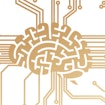
Individuals who have very high cognitive and intellectual ability coupled with a diagnosis of autism are known as twice exceptional (2e). In partnership with the SFARI-funded SPARK initiative, Jacob Michaelson will recruit a cohort of 2e individuals with autism and collect genetic and neuroimaging data on these individuals in order to better understand the neurobiology of this underserved population.


